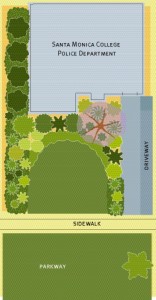Western datebook: “There it is. Take it.”
Posted on | January 4, 2010 | No Comments
In a December article for Chance of Rain, Southern California irrigation specialist Bob Galbreath recalled the arrival of Owens Lake water in Los Angeles from the Eastern Sierra and William Mulholland’s 1913 exhortation, “There it is. Take it!”
Take it we did — with such abandon that a century later our water supply is on the verge of exhaustion. Galbreath, who for two decades has preached abstemiousness in the form of drip irrigation over sprinklers, concluded the article by musing, “Perhaps it would help if I put out a big pile of drip tubing at my next seminar and said: ‘There it is. Take it!'”
Perhaps indeed. To see if he does, go to his talk on January 7th at the Los Angeles County Arboretum and Botanic Garden, where he is the first guest of the new year in “Thursday garden talks with Lili Singer.”
Not sure you’re interested? Then check out “gardengarden,” two demonstration gardens illustrating the difference between native vs conventional plants and drip vs sprinkler irrigation, which Galbreath did with dry designer Susanne Jett. The City of Santa Monica website has photos and a brief description, but be sure to read the complete brochure for the full plant list and detailed background of both sites. For those who wish to visit the two gardens, which are side by side and now six years old, they are at 1724 and 1718 Pearl Street, Santa Monica, 90405. Park elsewhere and take the bus. Still not convinced? Then by all means examine the project’s cost comparisons below. Then go hear Galbreath Thursday night. Because there it is. Take it.

A note on these numbers: The construction cost of a sod-based conventional garden is demonstrably cheaper in the above table. But this is a one time cost. Where the sting comes is in the on-going costs of maintenance. Here lawn takes and keeps on taking to the point that in 10 years, it would have cost $30,000, while the native one would have cost $8,000. The table also tells us that the cost of water has traditionally not been an effective incentive to conserve.
Tags: Bob Galbreath > chance of rain > Emily Green > garden\garden > Western Datebook
Comments
Leave a Reply




